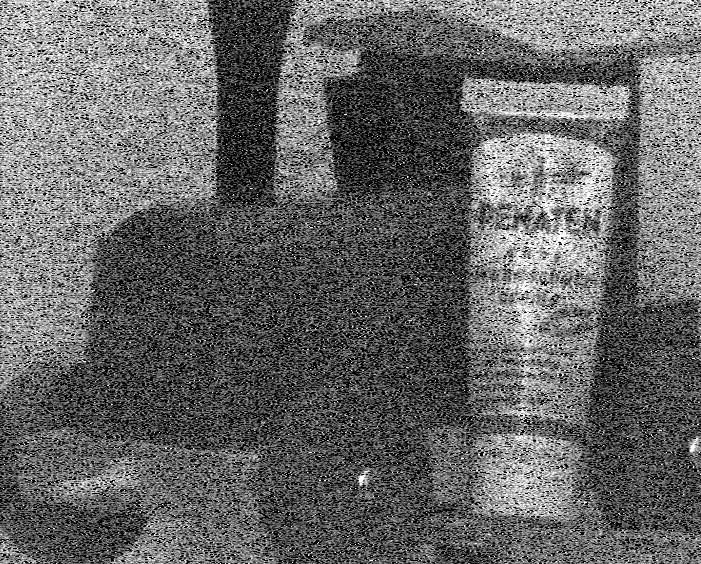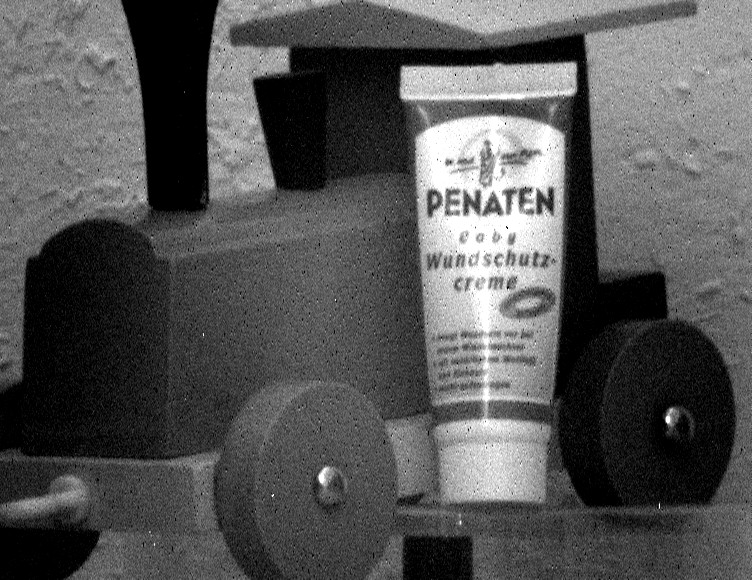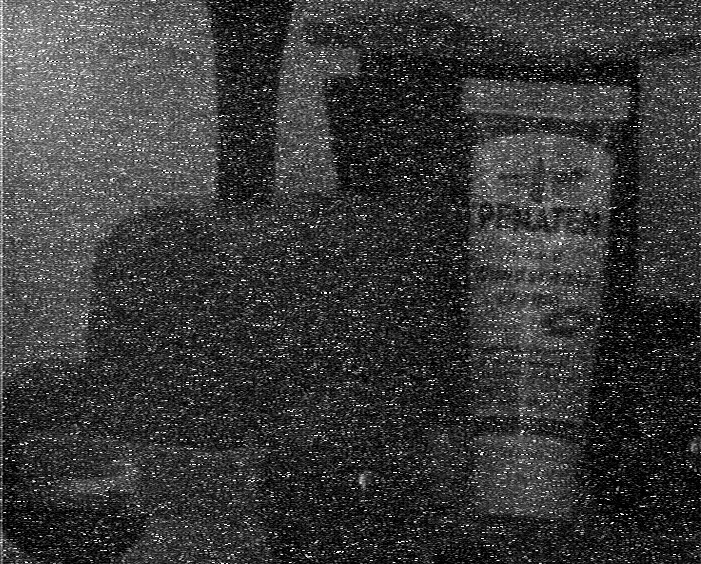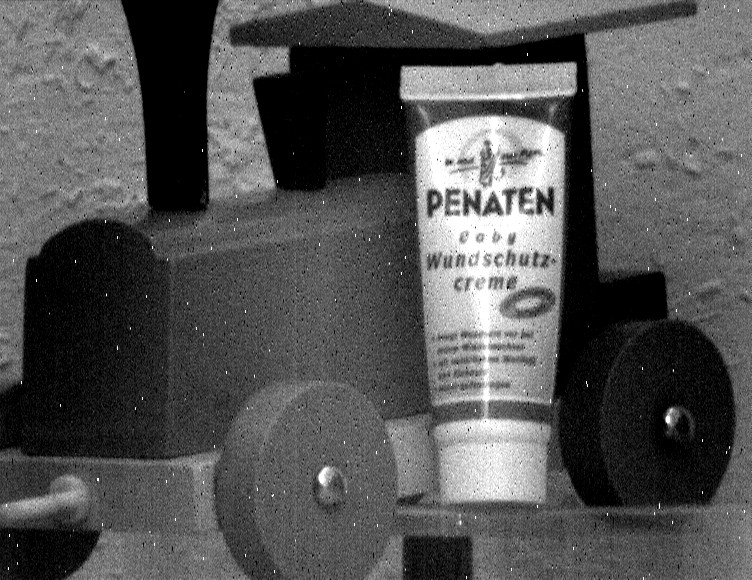

The live-image of the watec is quite impressive, as a great amount of detail is visible on the brighter dsos. But when faint detail is targetted, which can not be found in the live-image any more, the short exposure time of only 10 seconds and the lack of active cooling will have some effect. As the Watec already costs about 50% of a proper astronomical CCD-camera, i did a comparison between a MX716-USB from Starlight Xpress and the Watec on a very dark, indoor scene.
The test was done in a darkened room at 25°C without any air movement, so that both cameras would have the greatest possible difficulties with their chip temperature. The Watec did get quite warm during the test duration of 30 minutes, which also affected the image. The MX716 barrel got warm very little in comparison. The live-image of the Watec with 10 seconds exposures showed effectively nothing of the scene, so it really was quite dark.
 |
Result of the Watec: Summed-image of 800 seconds integration time (80 images), dark images have been subtracted. The scene can be recognized, but the image is seriously damaged by the dark spots that were left after subtracting the dark image. A more sophisticated image processing could smooth over the dark spots, and improve the visual impression of the image, but the information is destroyed at these locations. |
 |
Result of the MX716 from eight exposures of 60seconds each (only 480 seconds total), dark images were subtracted. The image looks ok, though somewhat noisy. |
 |
Result of the Watec: The image is beeing dominated by the hot/dark pixels, the scene itself is hardly recognizable, a different transfer-function/gamma-value would be needed to improve the darker regions. |
 |
Result of the MX716 from eight exposures of 60seconds each (only 480 seconds total): A few disturbances are visible, but no big deal. |
 |
The averaged, inverted raw-images of the Watec allow some kind of guess, that there might be some scene visible. The live-image did not show anything of this. |
Under these difficult conditions, the difference between the systems becomes quite clear. Cooling and longer integration times per image allow the MX716 to produce a usefull image, while the watec has serious problems. With such bad conditions and scenes as dark as this, cooling of the Watec might get important to push the envelope a little further. As the Watec got quite warm during operation, just using forced-air cooling on the camera body or the interieur could help a lot. Without such measures we will have to wait for winter or recognize the (present) limitations of videotechnology.